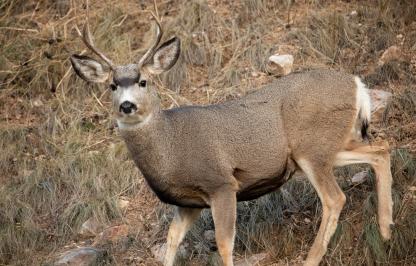For nearly 30 years, the Wyoming Game and Fish Department has recognized landowners throughout the state who have demonstrated outstanding wildlife management and implemented habitat improvement and conservation techniques on their properties with the Landowner of the Year Awards. These stewards of the land open access to research and recreation on thousands of acres across Wyoming and, more importantly, maintain habitat for wildlife. Game and Fish recognized seven landowners as the 2024 Landowners of the Year. They were honored during a reception in Douglas.
Pete Arambel
Midland Sheep Co., South Fork Sheep Co. and Dunton Sheep Co.
Tom and Mike Triplett
TMT Ventures BCR, LLC
Dale Thrash
Fort Hill, LLC
John and Joy Erramouspe
G&E Livestock Inc.
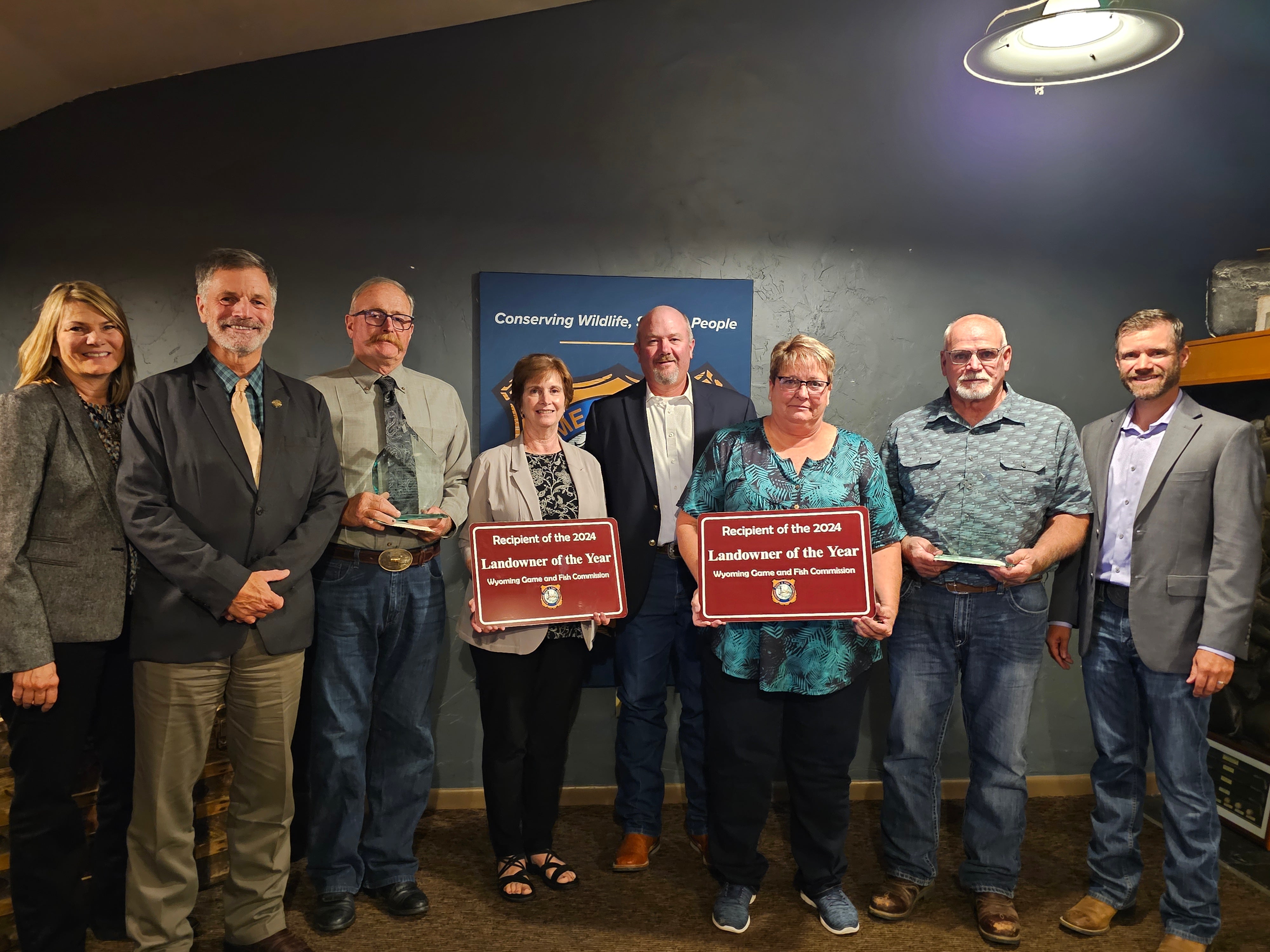
These four dedicated landowners in the Green River Region are true stewards of more than 9,000 acres in the Big Sandy Basin. Their land stewardship exemplifies the balance of ranch operations, wildlife habitats and ecological functions. They played a pivotal role in the collaborative Big Sandy Restoration Project and generously granted access to Game and Fish.
This project was crucial for the conservation of two native Wyoming fish species — the flannelmouth sucker and the bluehead sucker — both of which are species of concern. The landowners granted access to facilitate fish sampling, hydrological data collection and the removal of nonnative species above the reservoir. These efforts played a crucial role in the department’s understanding of suckers and assuring their persistence.
In 2020, discussions commenced on a large-scale project to remove nonnative species in a 60-mile stretch of river above Big Sandy Reservoir and its tributaries. This project was the largest of its kind to eliminate nonnative suckers negatively affecting the native suckers, while also salvaging native and sportfish from the system. This ambitious undertaking required extensive coordination and cooperation with landowners and project partners. The landowners played a pivotal role by granting access across their properties and providing insight into terrain conditions.
Beyond fisheries management, the landowners have demonstrated their commitment to enhancing riparian habitat. In 2021, a large habitat restoration project throughout the Buckskin Crossing Ranch segment of the Big Sandy River was initiated and focused on creating deep-water pools essential for overwintering trout and native suckers. The goals of the project were to excavate more than 50 pools, stabilize eroding banks and add natural habitat features like boulders and woody debris. Some of the methods were experimental, and if proven successful will be considered for future habitat improvement projects further downstream.
Al and Barb Johnson
Terry Creek Ranch
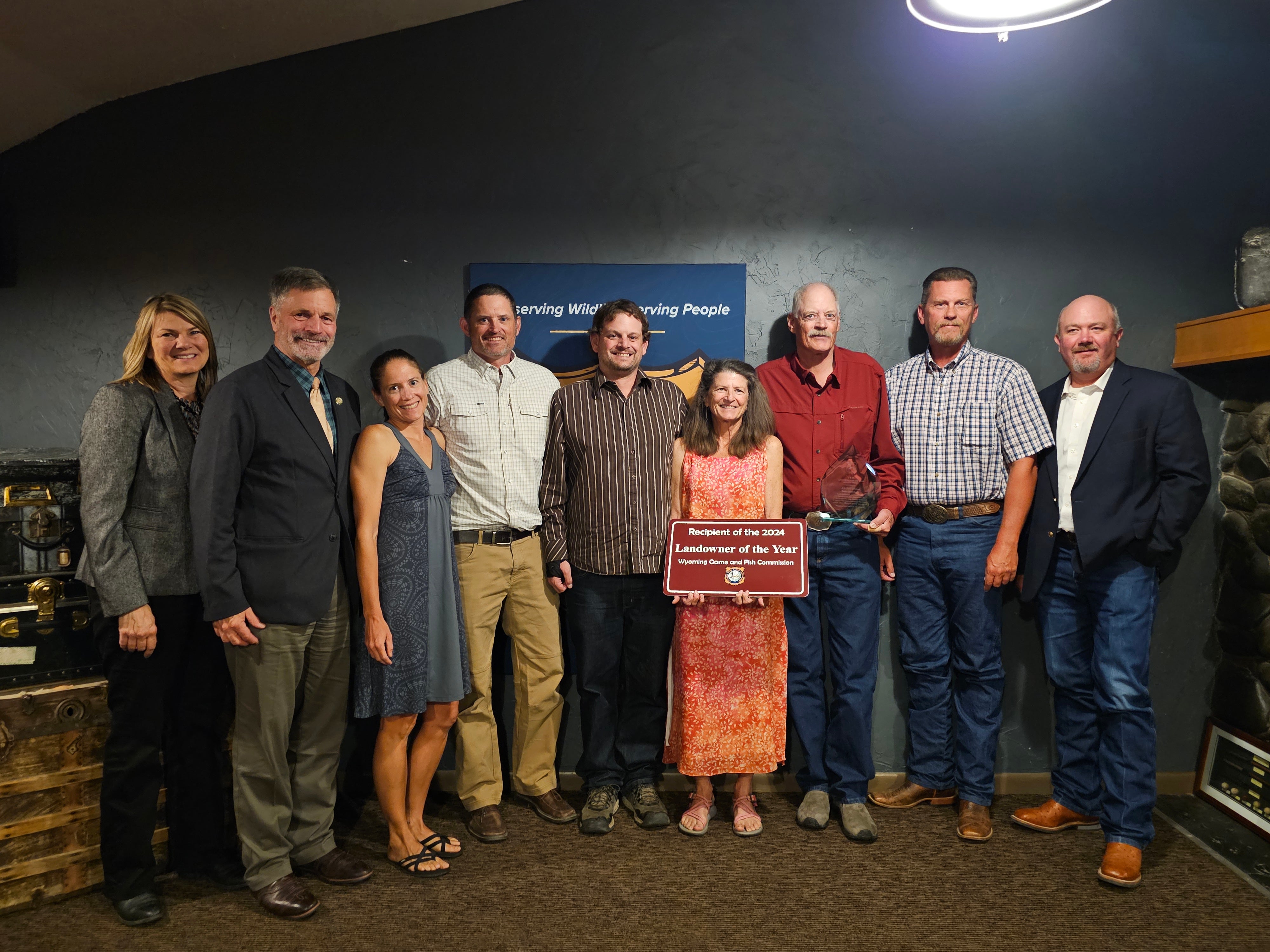
Al and Barb Johnson have stewarded the Terry Creek Ranch with a deep commitment to wildlife and conservation in the Centennial Valley in the Laramie Region. Nestled south of Centennial, their property serves as a vital corridor between the Snowy Range and Sheep Mountain for elk, mule deer and moose during their seasonal migrations in late fall and spring. It’s also a haven for pronghorn, beavers, mountain lions, black bears, migratory waterfowl and numerous wildlife species throughout the year.
In recent years, the Johnsons have undertaken significant efforts to make their ranch more wildlife-friendly. They’ve replaced nearly all fences with wildlife-friendly designs that minimize barriers to movement, especially along the U.S. Forest Service boundary. Their commitment to coexistence is evident in their approach to the thriving beaver population on their property, where they’ve willingly embraced strategies to manage and accommodate beavers.
The Mullen Fire of 2020 left its mark on the Terry Creek Ranch, prompting the Johnsons to focus on restoration efforts. They’ve spearheaded these efforts by conducting grass and forb seedings, managing timber to prevent soil erosion, and actively controlling post-fire cheatgrass infestations to restore the landscape’s health.
Their collaborative spirit extends beyond their property lines. They’ve facilitated access for Game and Fish employees to conduct habitat assessments, retrieve wildlife collars and provide vital management recommendations. They actively promote conservation among their neighbors, advocate for leaving gates open and upgrading fencing to wildlife-friendly fencing standards to facilitate migrations. Together, they recently facilitated a meeting between Game and Fish personnel and neighboring ranch managers to discuss habitat enhancements and conservation easements.
Their decision to place Terry Creek Ranch into a conservation easement ensures its continuity as a crucial wildlife corridor and safeguards the landscape from becoming a subdivision.
Fred and Patricia Hansen
Hansen Ranch
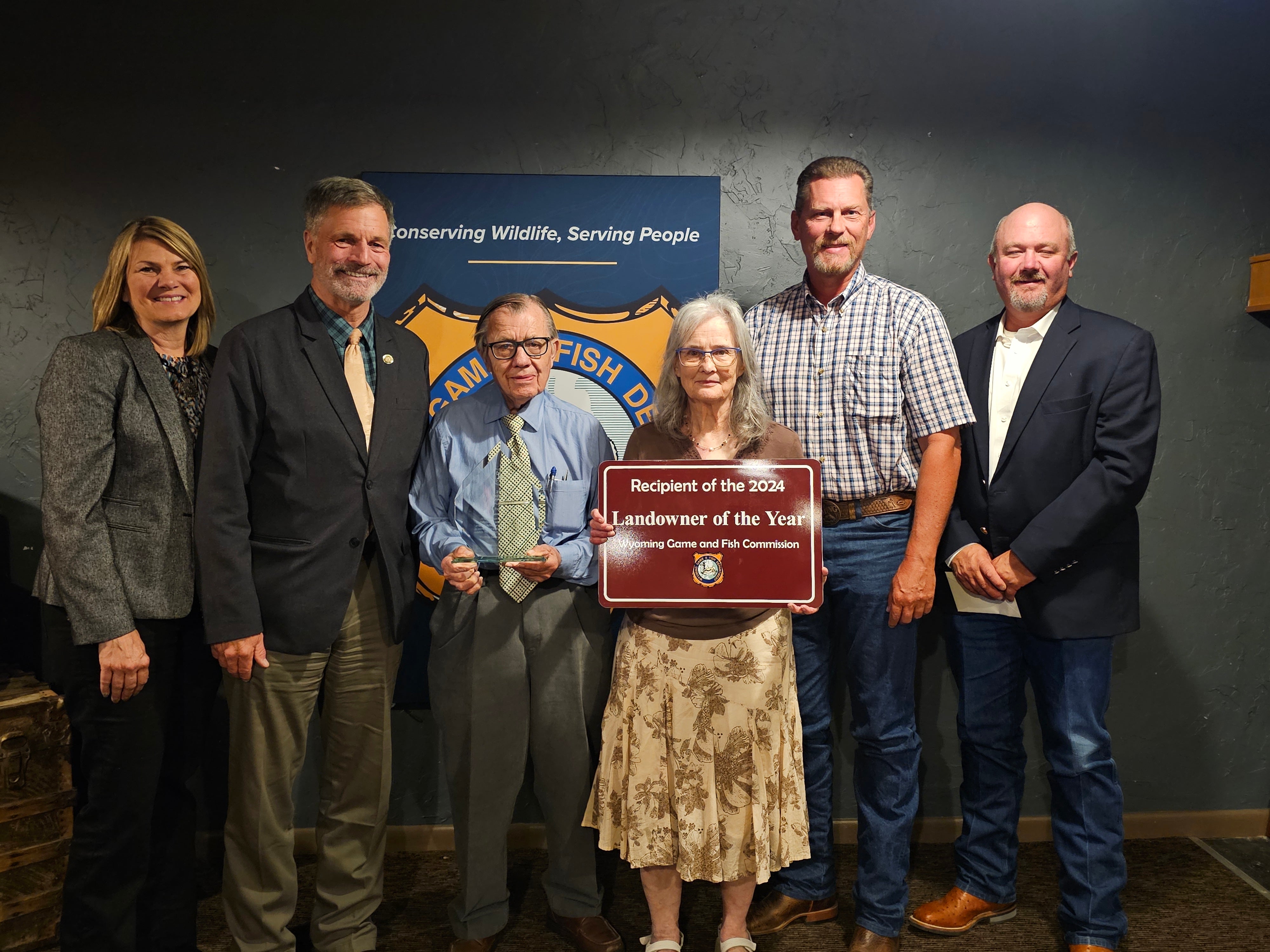
Fred and Patricia Hansen have a woven legacy of stewardship and conservation that spans generations. The Hansen Ranch is located in the heart of Albany County along the Laramie River. The ranch contains a diverse ecosystem from dense aspen groves, juniper stands and vibrant riparian corridors adorned with willows. The property teems with life.
The Laramie River, Potter Creek and lush irrigated meadows provide essential habitat for a wide array of wildlife from big game species to black bears, blue grouse and songbirds. Notably, the river hosts a thriving wild brown trout fishery.
Over the years, the Hansens have implemented strategic habitat enhancements to harmoniously support livestock and wildlife. They have fine-tuned grazing practices, modified irrigation techniques and enhanced riparian areas along riverbanks.
Their conservation efforts date to 1961 when they began partnering with the Game and Fish to establish angler access along the Laramie River. Their collaboration with Game and Fish has been crucial. The Hansens have generously granted personnel access to monitor big game and nongame species and fisheries.
More than 60 years later, the Hansens ensured their property would be a beacon of conservation and public access for future generations and sold a portion of their ranch bordering the Jelm Wildlife Habitat Management Area to the Wyoming Game and Fish Commission. The acquisition solidified nearly 1,000 acres of essential winter range for the region’s mule deer and other big game species.
Jim Bush and Bobbie (Tiny) Bush
Bush Ranch
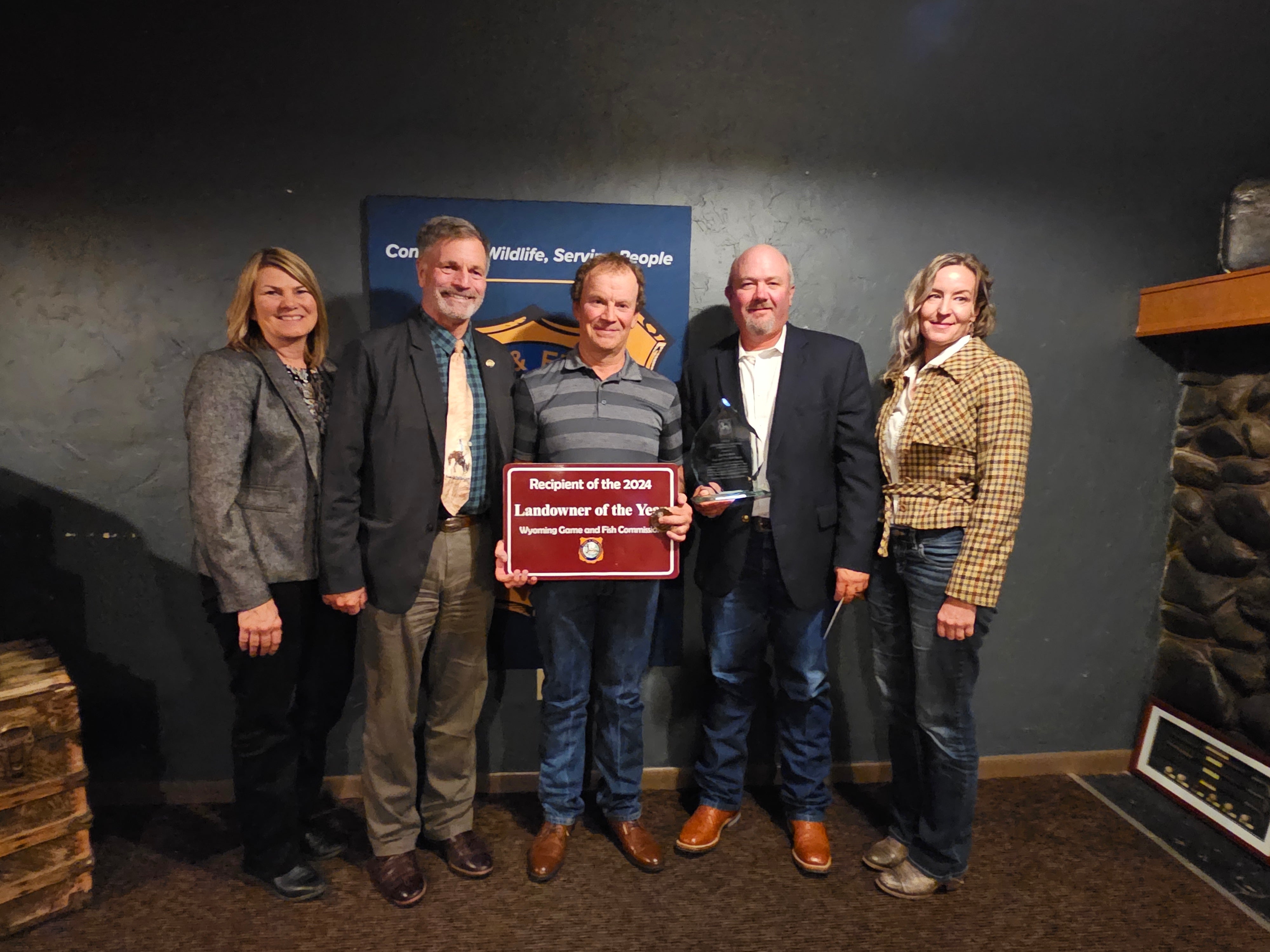
Jim and his mom, Tiny, operate their family ranch in northwest Crook County focusing primarily on bison alongside some cattle. Their expansive property boasts diverse wildlife habitats including large sections of native shortgrass prairie intermixed with healthy sagebrush. The Bush Ranch is a haven for native species like mule deer, pronghorn, sage-grouse and various grassland birds. Intact sagebrush on their land plays a crucial role for sage grouse and helps to maintain genetic connectivity across Wyoming, Montana, South Dakota and North Dakota.
Since 2010, Jim has collaborated closely with Game and Fish in sage-grouse conservation when he first reported a sage-grouse lek the department did not have in its database during a critical period of federal bird listing considerations, and at a time when many people did not want to volunteer known locations of sage-grouse. The Bush Ranch became pivotal in collecting genetic data from sage-grouse leks.
Beyond data contributions, the Bush Family has actively enhanced sage grouse habitat. They were early participants in the Natural Resources Conservation Service’s sage-grouse initiative program aimed at habitat improvement. Currently, Jim works with multiple agencies to remove encroaching conifers to further their conservation efforts.
The Bush family, including Jim’s late father, Dean, have always welcomed the department onto the ranch, supporting various activities from hunting access to conservation initiatives. They are known for their hospitality, especially accommodating veterans seeking hunting opportunities.



